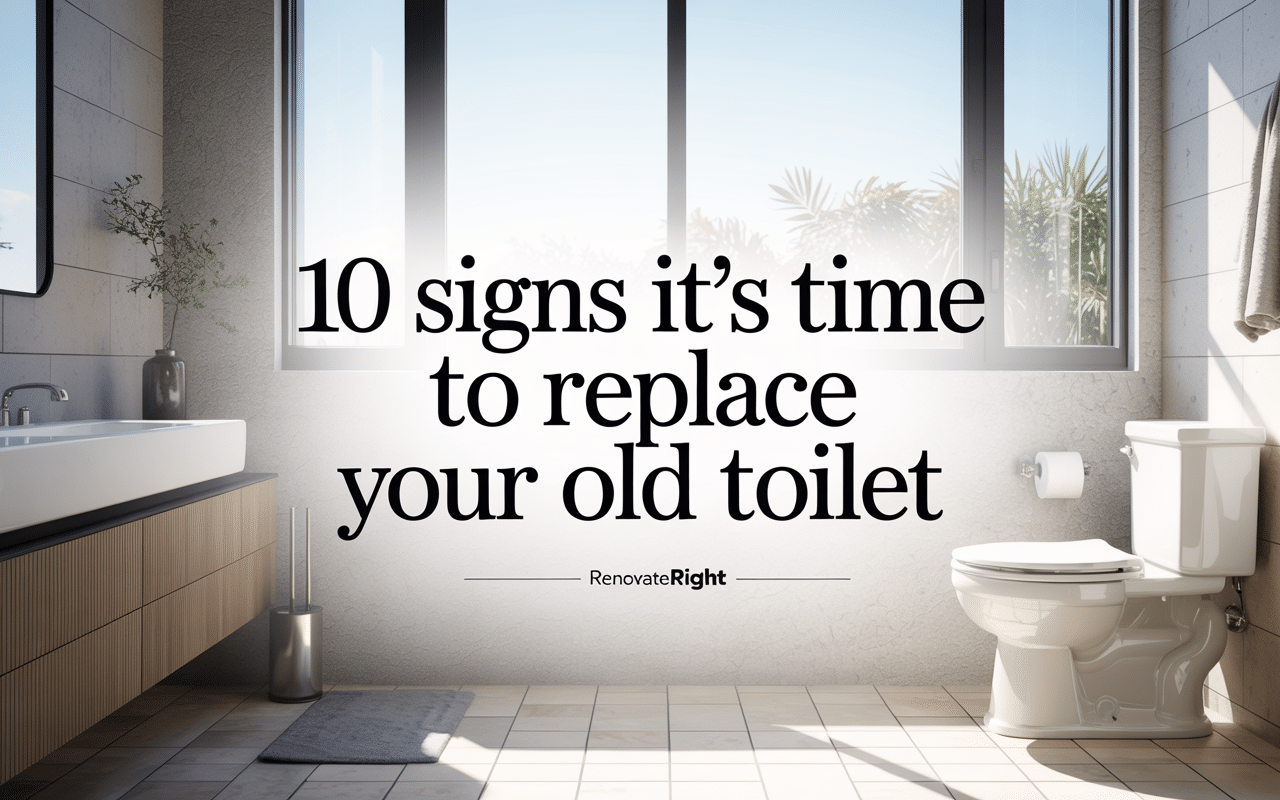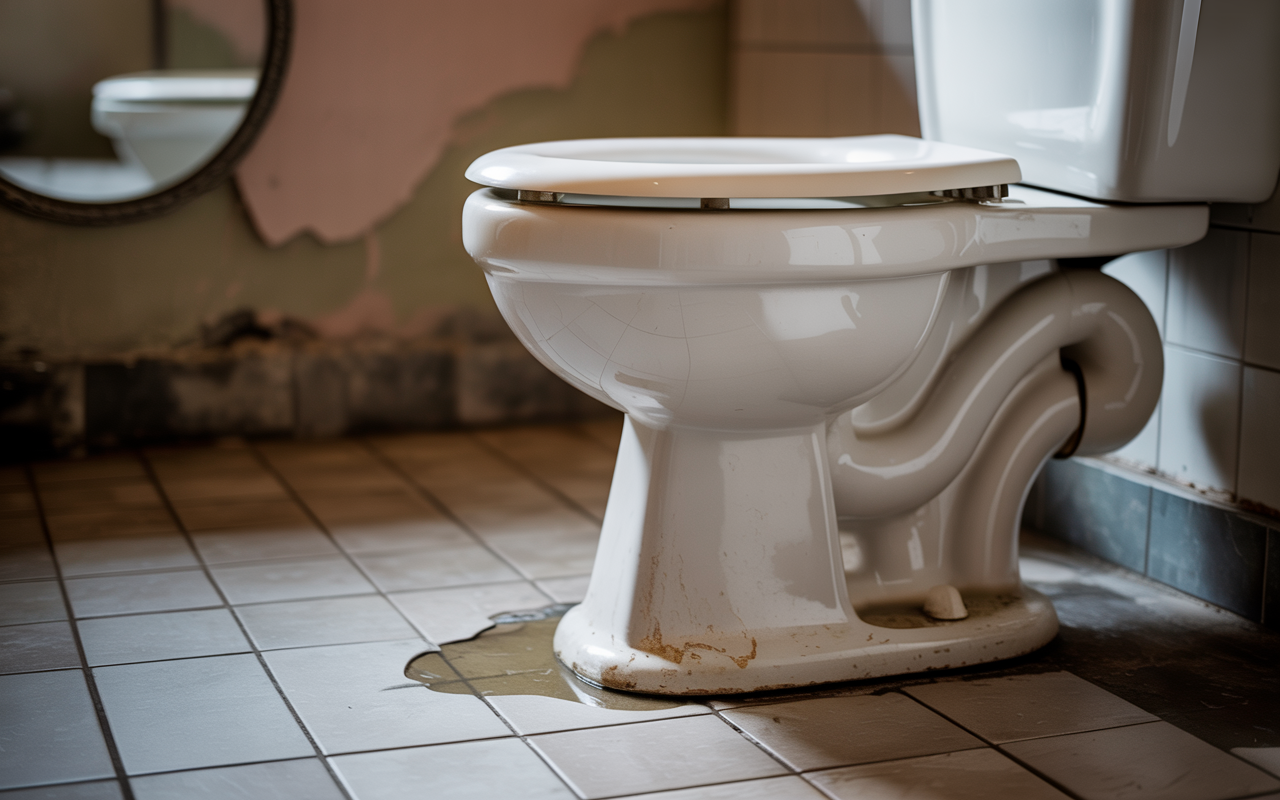10 Signs It’s Time to Replace Your Old Toilet
Introduction
Is your toilet acting up more than usual? Recognizing when it’s time to replace an old toilet is key to maintaining a functional and efficient home. Not only does a faulty toilet lead to unnecessary water wastage, but it can also cause costly damage to your property over time. From persistent leaks to skyrocketing water bills, ignoring these issues can cost you more in the long run. 🏠💧
Luckily, there are several clear signs that indicate when your toilet is past its prime. By paying attention to these red flags, you can avoid headaches and ensure your bathroom remains hygienic, eco-friendly, and cost-effective. Let’s dive into the top 10 signs that it might be time to say goodbye to your old toilet. 🚽✨
Frequent Clogs and Blockages
If you find yourself reaching for the plunger more often than you’d like, it’s time to take notice. Frequent clogs-even after proper use-can signal deeper problems with your toilet’s age or design. Older models may not have the flushing power needed to handle modern waste efficiently. This issue isn’t just inconvenient; it could mean your toilet is no longer up to the task. 😩
While occasional clogs happen to everyone, consistent blockages are a strong indicator that something is wrong. A professional inspection can help confirm whether repairs will suffice or if a replacement is the better option. For expert advice and services, consider reaching out to VK Renovations, who specialize in identifying and resolving plumbing issues. Moving forward, let’s explore another sign: leaks.
Persistent Leaks and Water Damage
Leaks around the base or tank of your toilet are not just annoying-they can lead to serious problems like structural damage and mold growth. If you notice unexplained puddles or dampness near your toilet, don’t ignore it! These leaks often stem from worn-out seals, hairline cracks, or even a damaged flange. Over time, they can wreak havoc on your floors and walls. 🚨
Addressing leaks early is crucial to prevent further complications. Ignoring them can result in costly repairs down the line, so it’s worth investigating the source of the problem. Sometimes, replacing the toilet entirely is the most practical solution. Now, let’s talk about visible cracks, which can also spell trouble for your bathroom setup. 🔍
“Hairline cracks in a tank or bowl, bad seals or broken flanges can all potentially cause leaking problems. This is an important issue, because if your floor becomes soft from water leaks it can attract mildew, rot or create structural damage.” -Mansfield Plumbing
Visible Cracks in the Bowl or Tank
Even minor fractures in your toilet’s bowl or tank can escalate into major issues if left unaddressed. These cracks compromise the structural integrity of the toilet and can lead to significant leaks or flooding. Once a crack forms, it’s only a matter of time before it worsens, making replacement the safest choice. 💔
“While using your plunger after a much-need bathroom break isn’t unusual, it may be time for a replacement if you constantly have to unclog your toilet.” -Reimer Home Services
Excessive or Persistent Running Water
A toilet that constantly runs is more than just an annoyance-it’s a sign of wear and tear within the tank or float mechanism. This issue often stems from aging parts that no longer function properly. Not only does this waste water, but it also increases your utility bills unnecessarily. 💸
“Unlike your grandma, toilets don’t always age gracefully. As we mentioned above, it’s important to be aware of how old your toilet is so when it reaches the end of its expected lifespan, you’re already prepared to buy a replacement.” -Reimer Home Services
The environmental impact of a running toilet shouldn’t be underestimated either. Over time, gallons of water are wasted, contributing to higher costs and resource depletion. If repairs haven’t resolved the issue, upgrading to a newer model might be the best course of action. Speaking of performance issues, let’s discuss inefficient flushing next. 🌿
“Imagine this: tiny cracks showing up across the surface of your toilet like faint spiderwebs. They might seem small, but they can lead to leaks, and leaks lead to water damage fast.” -Smedley Plumbing
Inefficient Flushing and Low Performance
Does your toilet require multiple flushes to get the job done? Weak flushing power is a common symptom of mineral buildup or outdated designs. Modern toilets are engineered for superior performance, ensuring waste is removed efficiently with minimal effort. 🔄
“Older toilet models use three to five gallons of water per flush, jacking up your water bill. For increased efficiency, newly-designed models use less than two gallons for each flush. That efficiency and money-saving boost is enough to convince many homeowners to replace their commode.” -Terry’s Plumbing
If you’re tired of dealing with incomplete flushes or double-flushing woes, it might be time to upgrade. Newer models offer advanced flushing mechanisms that save water while delivering better results. Keep reading to learn how inefficient toilets can affect your wallet. 💡
“If your toilet feels unsteady or moves when you sit down, check the bolts holding the seat and tighten them if they’re loose. If your toilet is still wobbly, there could be an issue with the wax ring, which can lead to a leak, water damage in the flooring, and sewer odors in the bathroom.” -Angi
 Increasing Water Bills or Water Wastage
Increasing Water Bills or Water Wastage
Older toilets are notorious for guzzling water, sometimes using up to 6 gallons per flush! If your water bills have been creeping upward, your ancient toilet could be the culprit. Investing in a modern, water-efficient model can significantly reduce consumption and lower your expenses. 💧💰
“There’s Mineral Deposit Buildup · There are Frequent Clogs · It’s Just Old.” -Terry’s Plumbing
Recurring Repairs and Maintenance Costs
Constantly shelling out money for repairs? At some point, the cost of fixing an old toilet outweighs the benefits of keeping it. Frequent maintenance indicates that your toilet is nearing the end of its usable life. 🛠️
“If you have a plumber give you a quote for fixing your toilet that appears high, ask what the cost of a replacement toilet would be. Oftentimes it’s less expensive to replace an older toilet than have it fixed.” -Mansfield Plumbing
Upgrading to a new toilet not only eliminates recurring repair headaches but also introduces modern features like touchless flushing and improved hygiene options. Consider consulting with professionals like VK Renovations to explore your options. Next, we’ll examine how the age of your toilet plays a role in its performance. ⏳
“Frequent toilet running is a sign that components are malfunctioning, with frequent culprits being the rubber flapper or fill valve… When frequently confronted by a running toilet, you must decide if its cost-effective to repair/replace the part, or if the toilet itself should just be replaced.” -Terry’s Plumbing
Age of the Toilet
Most toilets are designed to last between 10 to 15 years. Beyond this timeframe, hidden issues like internal part degradation or unseen leaks become more likely. If your toilet is approaching or exceeding this lifespan, proactive replacement can save you from unexpected failures. 📅
“Add in old-school designs that suck up way too much water, and you’re looking at a setup that’s draining more than just the bowl.” -Smedley Plumbing
Persistent Odors and Stains
Unpleasant smells or stubborn stains that refuse to budge can indicate deeper problems, such as leaks or bacterial buildup. These issues are often difficult-and expensive-to resolve through cleaning alone. Replacing the toilet ensures a fresh start and eliminates the source of odors. 🧼🚫
Wobbling, Instability, or Poor Installation
A wobbly toilet is more than just a nuisance-it’s a sign of potential base corrosion, flange failure, or deteriorating seals. Any of these issues justify replacing the unit to restore stability and prevent further damage. Don’t wait until the problem worsens! 🚧
Outdated Design or Aesthetics
Technology and design trends evolve rapidly, and older toilets may lack the comfort, accessibility, or style of modern options. Upgrading allows you to enjoy sleek designs and innovative features that enhance your bathroom experience. 🎨✨
FAQ: Common Questions About Toilet Replacement
How long should a toilet last before replacement? Most toilets last 10-15 years, but factors like usage and maintenance can influence longevity.
Can minor cracks or leaks be repaired, or is replacement always necessary? While small fixes may work temporarily, cracks and leaks often worsen over time, making replacement the smarter choice.
What modern features are available in new toilets? Touchless flushing, dual-flush systems, and water-saving designs are just a few innovations found in today’s toilets.
How do I know if a running toilet is wasting water? Check your water meter before and after stopping water flow to see if it changes, indicating wastage.
Is it worth replacing a toilet to save on water bills? Absolutely! Modern toilets use significantly less water, reducing both consumption and utility costs.
Conclusion: Taking Action for a More Efficient Home
Recognizing the signs of a failing toilet is essential for preventing bigger problems like water damage, high utility bills, and frequent repairs. By addressing these issues early, you can maintain a cleaner, more efficient home. Remember, multiple signs often mean it’s time to act sooner rather than later. 🏡💪
If you’ve noticed any of these 10 signs, it’s worth considering a replacement. Modern toilets offer improved performance, water efficiency, and aesthetic appeal-all contributing to a better bathroom experience. Take a moment to assess your current setup and reach out to trusted professionals like VK Renovations for guidance. Your future self (and your wallet) will thank you! ✨
Don’t wait until the problem escalates-take proactive steps today to ensure your bathroom remains functional and stylish for years to come. 🚀




 Increasing Water Bills or Water Wastage
Increasing Water Bills or Water Wastage